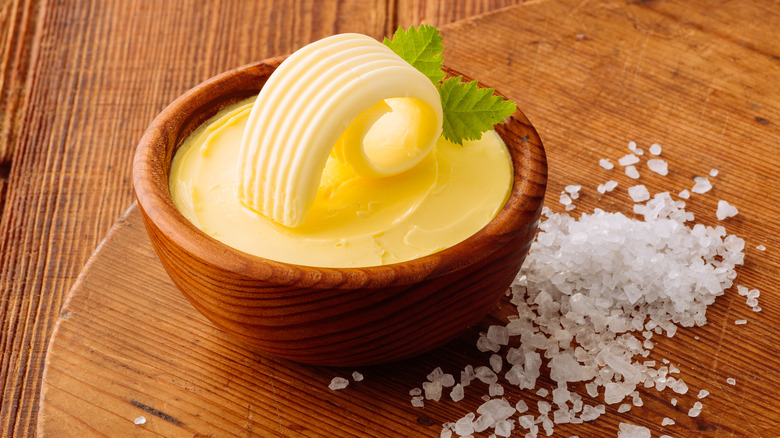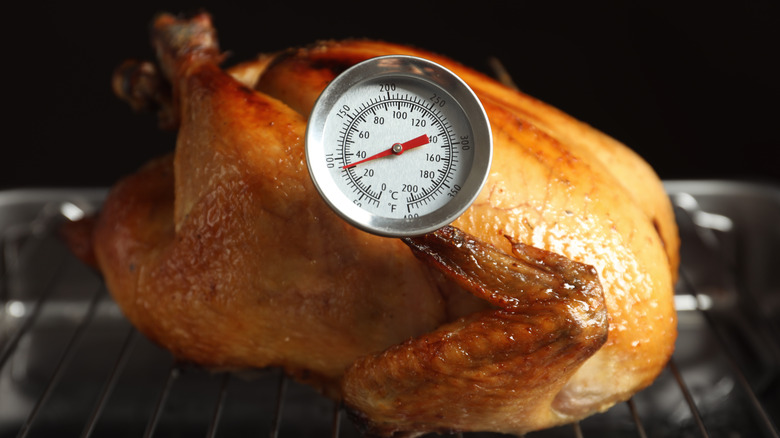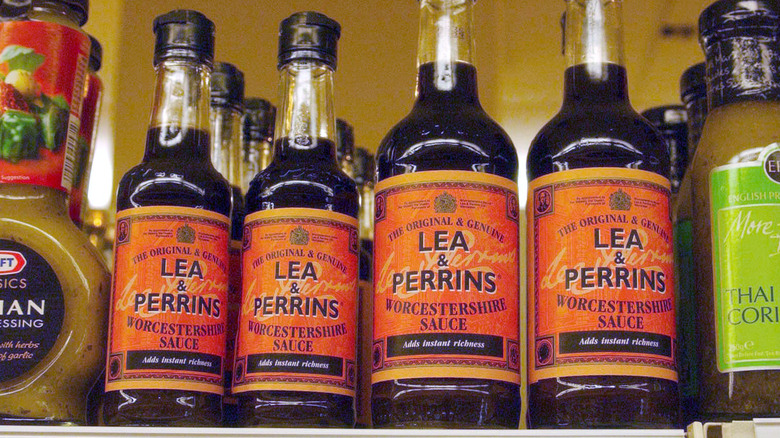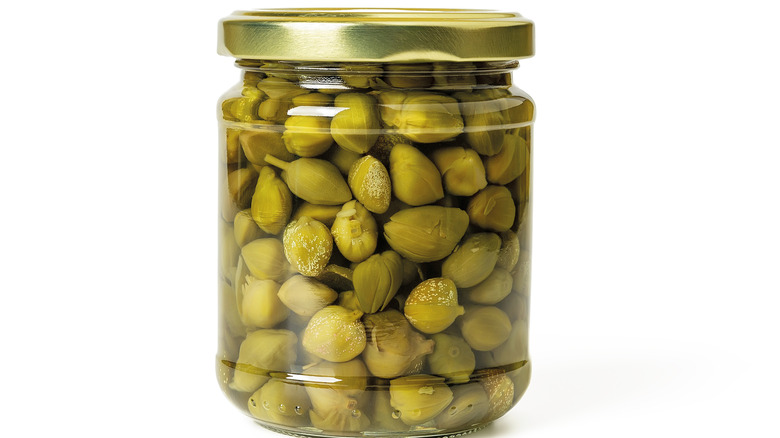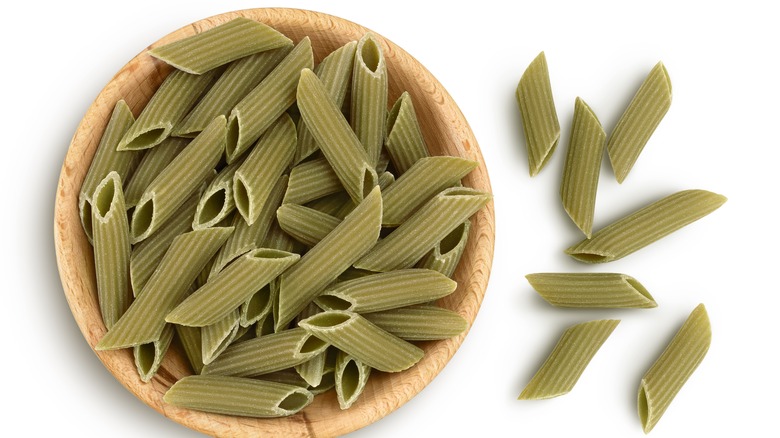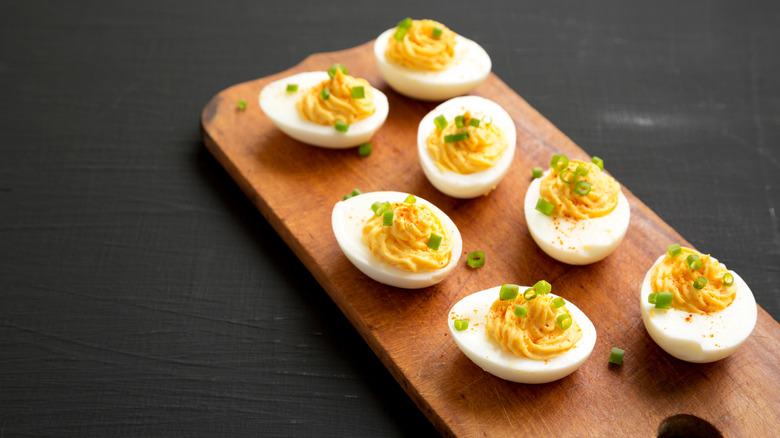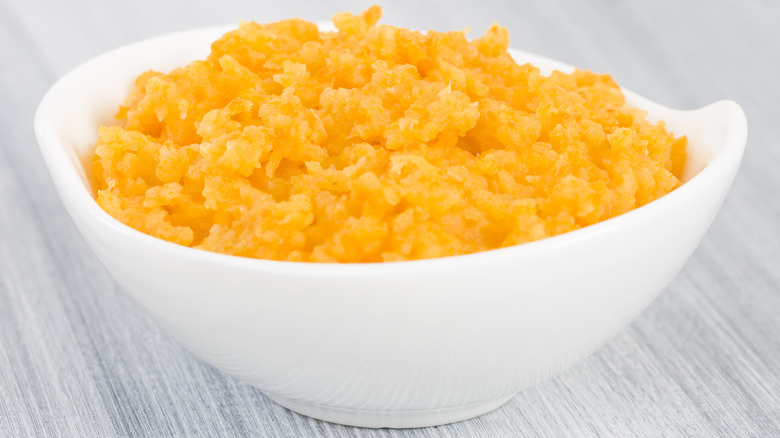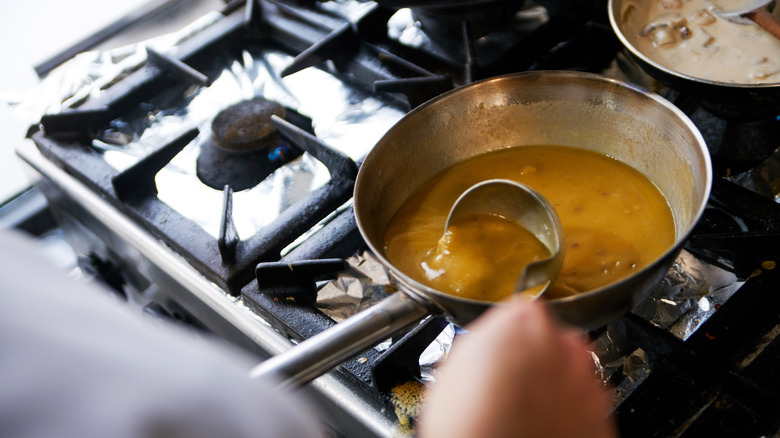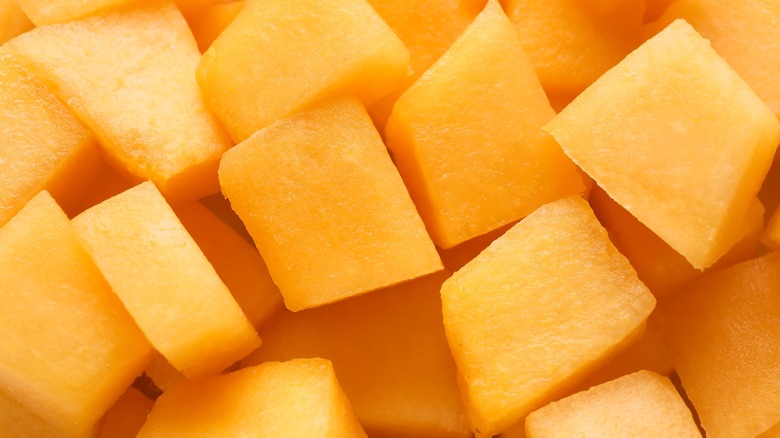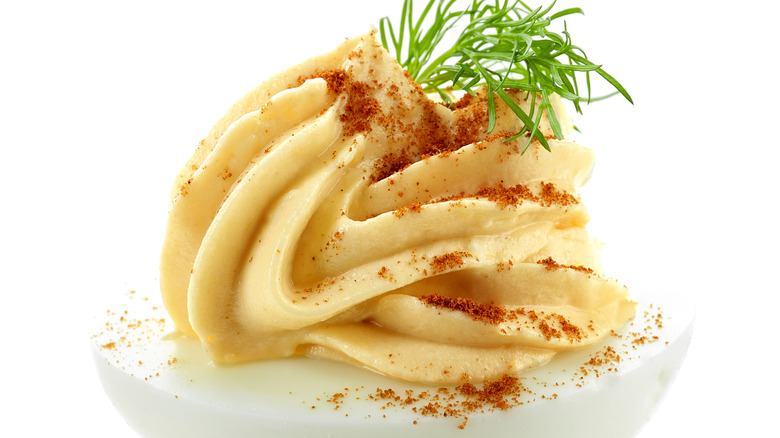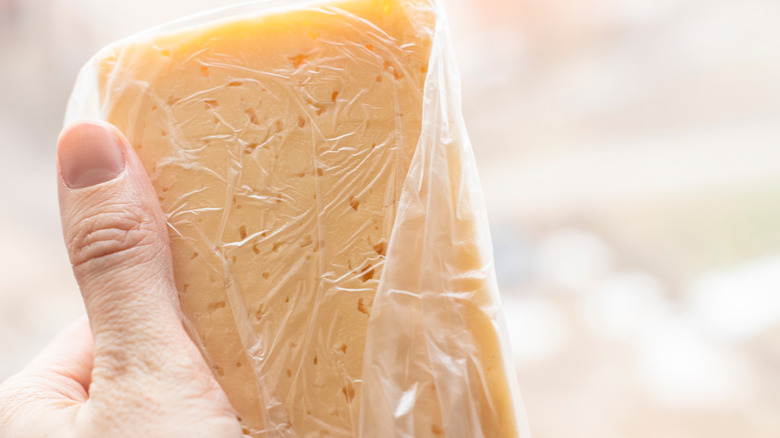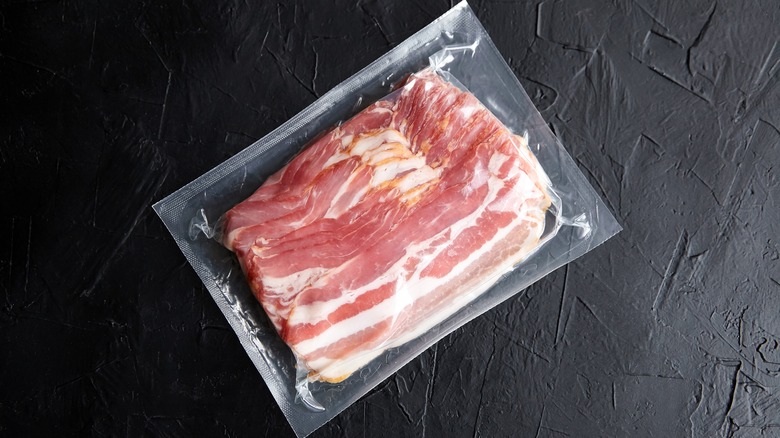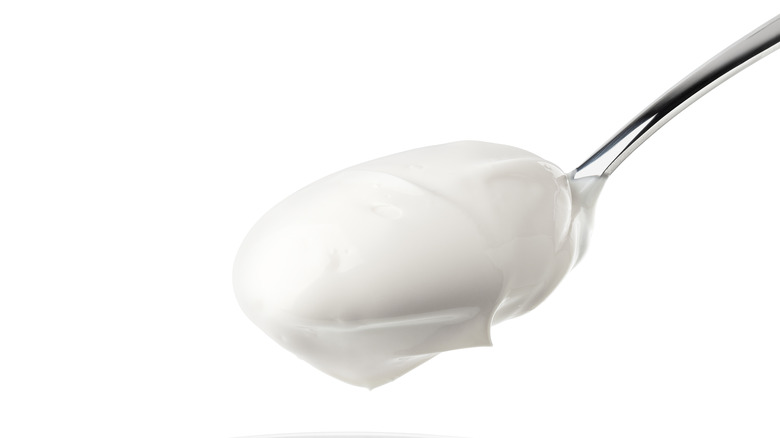Alex Guarnaschelli's 15 Best Cooking Tips For Home Chefs
We may receive a commission on purchases made from links.
Alex Guarnaschelli is akin to modern food media's Julia Child. Guarnaschelli is a reoccurring judge on Food Network's "Chopped," "Iron Chef America," "Beat Bobby Flay," and host of her show Supermarket Stakeout. Outside of her food media presence, she is the executive chef and owner of Butter, a high-end, seasonally inspired restaurant located in Midtown Manhattan.
Guarnaschelli was inspired to begin cooking by her parents; her mother was a cookbook editor while her father was an avid cook of cuisines ranging from Chinese to Italian. Guarnaschelli herself studied under Guy Savoy and at the La Varenne Cooking School in Burgundy, France (via Food Network). She is also the author of three cookbooks: "Old-School Comfort Food: The Way I Learned to Cook," "The Home Cook: Recipes to Know by Heart," and "Cook with Me: 150 Recipes for the Home Cook."
Guarnaschelli is a friendly face in the cooking world and invites her viewers, readers, and fans into her kitchen (and by proxy, her world). Here are some of her favorite tips for cooking, cocktails, and everything in between.
Add sea salt and cracked pepper to butter
There's nothing more heavenly than a freshly baked roll with a schmear of butter. Alex Guarnaschelli recommends upgrading your bread and butter by adding a sprinkle of flaked sea salt and cracked black pepper to the stick of butter for texture. This tip, which she shared on her Instagram, is applicable to both salted and unsalted varieties — but Guarnaschelli recommends sticking to the salted variety for an extra boost of flavor. The quality of butter you use is also imperative to make an impression with your bread and butter appetizer; our favorite brands include Rodolphe Le Meunier and Bordier.
This serving tip is perfect for your favorite crusty bread or to keep your guests occupied while you're making a high-end meal. Guarnaschelli notes that the salted and peppered butter technique is a staple for her brunches and will add an extra feeling of homemade deliciousness when you're cooking for the people you love.
Butter the rack to prevent the turkey from sticking
Holiday dinners are stressful as is. You don't need to have your delicate, flavorful turkey skin rip off the bird and stick to the rack. Luckily, Alex Guarnaschelli has a tip to prevent your turkey from sticking. In a recent TikTok video, she recommended her audience butter the entire roasting with a pastry brush and a couple of sticks worth of melted butter. The rack is a crucial cooking tool for turkey, she also notes, because it allows heat to contact all sides of the turkey and results in an even-cooking experience all around the bird.
While butter is the go-to option for Guarnaschelli, you can also use non-stick cooking spray to treat your entire cooking rack before adding the turkey. If you use this method, you should be sure to spray down all the nooks and crannies (not just the top) of the rack to prevent sticking.
Keep Worcestershire sauce handy for seasoning
Worcestershire sauce is a key savory ingredient to keep in your pantry at all times. This sauce, which has the texture of a thin barbecue sauce, is made from a flavorful blend of fermented anchovies, cloves, vinegar, molasses, tamarind, and chili pepper extract. Since some versions may contain a barley-based ingredient, Worcestershire sauce is not always an option for folks with gluten-free diets. If you have a fish allergy or the idea of including anchovies in anything edible is unnerving to you, you can check out Annie's organic vegan Worcestershire sauce.
Regardless of what kind of Worcestershire sauce you pick, Alex Guarnaschelli recommends using it to add last-minute saltiness to almost any dish. She uses Worcestershire sauce to season her scrambled eggs or as a marinade for steak. If you're making homemade clam chowder, you might also consider adding a splash of the sauce to round out the fishy flavors.
Add caper brine to martinis
Capers are a bit of a culinary anomaly. These little balls are pickled caper flowers; the texture of that of a berry with an overwhelming savoriness. The caper can be used for adding a touch of savory flavor to bagels with lox or served with a fresh broiled salmon filet.
Alex Guarnaschelli uses not the caper itself, but its brine to jazz up her dirty martini recipe. She pairs the brine with a bit of floral gin to her dirty martinis. You can go a step forward by swapping out your olives for caperberries and using the caper brine instead of the olive juice. Unlike the powerful flavor of the olive, you'll find that the caper is more nuanced and a bit saltier. This dirty martini can be made with your choice of gin or vodka, as well as a splash of dry vermouth for extra measure.
Making gluten-free pasta pop with vinegar
Gluten-free pasta is both a blessing and a curse for folks with gluten intolerances. Gluten-free pasta can be made with a myriad of different ingredients including legumes, rice, or grains like quinoa. While you'll still get to eat pasta, you may find that gluten-free pasta, regardless of the type of gluten-free pasta you choose, doesn't lend well to eating on day two and tends to gum up after sitting for a long period. But there are some ways to make gluten-free pasta a little bit more appetizing. Alex Guarnaschelli recommends adding a pop of flavor to gluten-free pasta with the simple addition of vinegar. As she shared in an interview with "Good Morning America," the cook sticks with using red-wine vinegar instead of lemon juice or zest. The vinegar, she explains, brings out the flavor of pea-based pasta more than other types of acid.
Alex Guarnaschelli's favorite way to prepare pasta is simple: butter, herbs, pasta, and, of course, acid. Not only is this a delicious, easy gluten-free meal, but it can be enhanced with proteins or vegetables as well.
Spicing deviled eggs with cayenne
Deviled eggs are a blank canvas for flavor and Alex Guarnaschelli's rendition of this tailgating classic is no different. The chef substitutes paprika, which is used for a pop of color and flavor on deviled eggs, with its spicier cousin — cayenne pepper. She integrates the powdered cayenne into the egg yolk itself, with other ingredients like her favorite Worcestershire sauce, hot sauce, and spicy mustard, as well as a generous garnish on top.
For folks looking for more heat and warmth from the standard deviled egg recipe, Guarnaschelli also recommends adding dried ginger to the yolk. She notes that the ginger adds a bit of tingle to your throat in the same way wasabi provides a unique flavor when paired with sushi. Plus, you'll get a great contrast between the back-of-your-throat burn of the ginger and the smooth, buttery texture of the egg yolks.
Sprinkle coffee grounds into fresh coffee
Most of us can't think of any other way to start our morning than a delicious cup of coffee, and Alex Guarnaschelli is no different. Her rendition of the traditional morning cup of coffee is a little different than most, but we think it can add a new dimension to the beverage and make it all the more delicious. The chef keeps a container of coffee grounds handy even after she brews a fresh cup for herself. Guarnaschelli sprinkles a few coffee grounds atop her coffee for what she considers a burst of coffee flavor and texture.
According to Healthline, there are some benefits to adding a bit of ground coffee to your brewed coffee. The beans have more concentrated caffeine, so you'll feel a little bit of a jolt if you choose to follow Guarnaschelli's advice. And if you're wondering, the Food Network star takes her coffee with a splash of milk or half-and-half, but has been known to indulge in a seasonal pumpkin spice latte once in a while.
Bulk up mashed potatoes with other root vegetables
Sometimes we forget that potatoes are indeed vegetables. These tubers grow underground, as do other vegetables like carrots, turnips, and radishes. The similarities in texture and nuanced flavor of these vegetables make them the perfect pairing for a modern take on mashed potatoes. Stringy vegetables, like asparagus, are not suitable substitutes for root vegetables because of their unique, non-starchy texture.
Alex Guarnaschelli likes to incorporate vegetables like sliced turnips or sunchokes into her mashed potato recipe. She notes that these ingredients can help stretch the mashed potato recipe, as well as provide a boost of vitamins and minerals. The chef has also been known to substitute rutabaga for sweet potatoes in a candied yam recipe or turnips for potatoes au gratin. Once the root vegetables are cooked down and mixed with other mashed potato ingredients like butter and cream, it is hard to tell the difference between standard mashed potatoes and your new, healthier rendition.
Using vegetable puree to thicken gravy
Nothing goes better with mashed potatoes than a warm crock of gravy. Alex Guarnaschelli's recipe for gravy includes a somewhat unconventional ingredient that will make your gravy lighter, but still flavorful. She adds vegetable puree to her gravy instead of opting for the classic roux (made with butter and flour). Her puree is made with roasted garlic and onions pureed in a blender with chicken stock, sherry, mustard, vinegar, and seasoning (via Instagram). She also uses roasted, pureed carrots and celery for a more organic flavor, but note this is not always necessary for the perfect gravy.
Not only is this an easy way to incorporate more veggies into your dinner, but you also won't have to go through the arduous process of making a roux. If your gravy still isn't thick with the vegetable puree, we recommend trying to add a flour and water slurry.
Make a soup out of cantaloupe
Cantaloupe is the perfect summertime fruit. But if you've ever purchased a large cantaloupe, you know how difficult it can be to eat the whole melon before it goes bad. Alex Guarnaschelli uses cantaloupe to make a delicious summer soup. Her recipe, which is a summer staple at Butter, is made with refreshing sliced cantaloupe, lemon juice, nonalcoholic sparkling cider, and sweetened to taste. This cold soup is a refreshing experience in the hot summer months in New York, and it only requires a blender and a bit of imagination. Guarnaschelli also recommends adding a few slices of salted-and-peppered cucumber as a garnish.
According to WebMD, cantaloupe is a nutritional powerhouse that includes a ton of vitamins like beta carotene and antioxidants that help lower the risk of inflammatory diseases. Plus, cantaloupe's high water content is bound to keep you hydrated on hot summer days.
Garnish deviled eggs with potato chips
Alex Guarnaschelli loves playing with flavors and textures in her food, so it's no surprise that she would have a suggestion to contrast the creaminess of a deviled egg. One of her favorite ways to eat deviled eggs is by dipping the whites into crushed potato chips. According to Guarnaschelli, the saltiness and crunchiness of the potato chip highlight the egg white's flavor and texture, which is often overshadowed by the much creamier yolk. She also dusts her egg whites with salty and spicy seasonings to help bring a little attention to the white before adding the yolks.
When it comes to potato chips, you can also play around with the flavors and crunchiness of the chip. We recommend using sour cream and onion chips for this hack because the flavor of the onion plays well with the creamy yolk. Use kettle-cooked chips for more crunch, or acidic flavors like salt and vinegar for a more complex mouthful.
Keep deviled eggs fluffy with whipping cream
Crafting the perfect deviled egg is all about making the creaminess of the yolk contrast with the gelatinous texture of the hard-boiled white. Alex Guarnaschelli learned how to make the perfect contrast in her deviled eggs from her mother — who used whipping cream to help bolster the texture of the yolk. Adding whipping cream, along with regular additions like mayonnaise and seasonings like paprika, can make the perfect appetizer or Easter treat.
Whipping cream has a butterfat content between 30 and 35%, which gives the dairy product stabilizing properties. Heavy cream has a slightly higher butterfat content at around 35%, which is perfect for making homemade whipped cream for ice cream sundaes or for garnishing warm slices of apple pie. Some deviled egg recipes use heavy cream instead of whipping cream, but we recommend adding and tasting along the way. We can only imagine how creamy these deviled eggs will be.
Wrap cheese in plastic wrap
Your refrigerator is a myriad of smells and odors, so it is entirely logical for a chef to want to protect the smell and flavor integrity of their ingredients. Guarnaschelli is a fan of all things cheese but takes a particular liking to the divisive American cheese. To keep her American cheese fresh, she wraps her cheese in plastic wrap in the fridge, which she thinks limits odor and flavor exposure in the fridge (via Twitter).
The expert opinion on this cheese storage method is varied. Wrapping cheese tightly in plastic can minimize airflow to the cheese, which prevents the air from letting out its natural odors. You may find that your cheese starts to smell like floor cleaner too since the cheese releases ammonia as it ages. Instead, you can use cheese paper to wrap around the rind of the cheese or place the cheese in an air-tight container to trap moisture.
Blanch bacon in water first
Bacon is a breakfast staple, especially when paired with scrambled eggs and fresh toast. But for some folks, eating bacon is a rare occasion because of how fatty and rich the meat can be. Guarnaschelli's method for cooking bacon dates back to her Instagram in 2015, where she describes how to properly cook bacon. Her technique is derived from the French method of cooking meat by blanching it in water. Guarnaschelli applies this method to cook the bacon in half an inch of water to keep the bacon moist and to prevent the oil from splattering all over the stove.
If you use this method, you should cook the bacon in cold water to start. This optimizes the rendering time and produces a delicious golden-brown hue. Then, you can bring the heat up slowly until the bacon is crisp on one side and ready to flip. While this method may not be entirely practical for large portions of bacon, it is perfect for those moments when you just need a few pieces of bacon to make your day better.
Making homemade butter with sour cream
Making homemade butter is a delicious food science experiment that you can do at home with a few simple ingredients: heavy cream, salt, and pepper. Guarnaschelli boosts the flavor of her butter by blending in sour cream with these standard ingredients (via YouTube). This secret addition, she notes, adds a distinct tanginess to the butter and makes it taste much more unctuous. This is because sour cream is made from dairy-based cream with bacteria cultures mixed in. These cultures slowly release lactic acid into the cream which provides a tangy undercurrent.
If you plan to add sour cream to your next butter-making adventure, Guarnaschelli recommends sticking to a "natural" sour cream without stabilizers like guar gum. And since the sour cream is naturally high in fat, you won't have to worry about messing up the creaminess of your homemade butter. All you have to worry about is finding the perfect bread to pair with your new favorite way to make butter.

